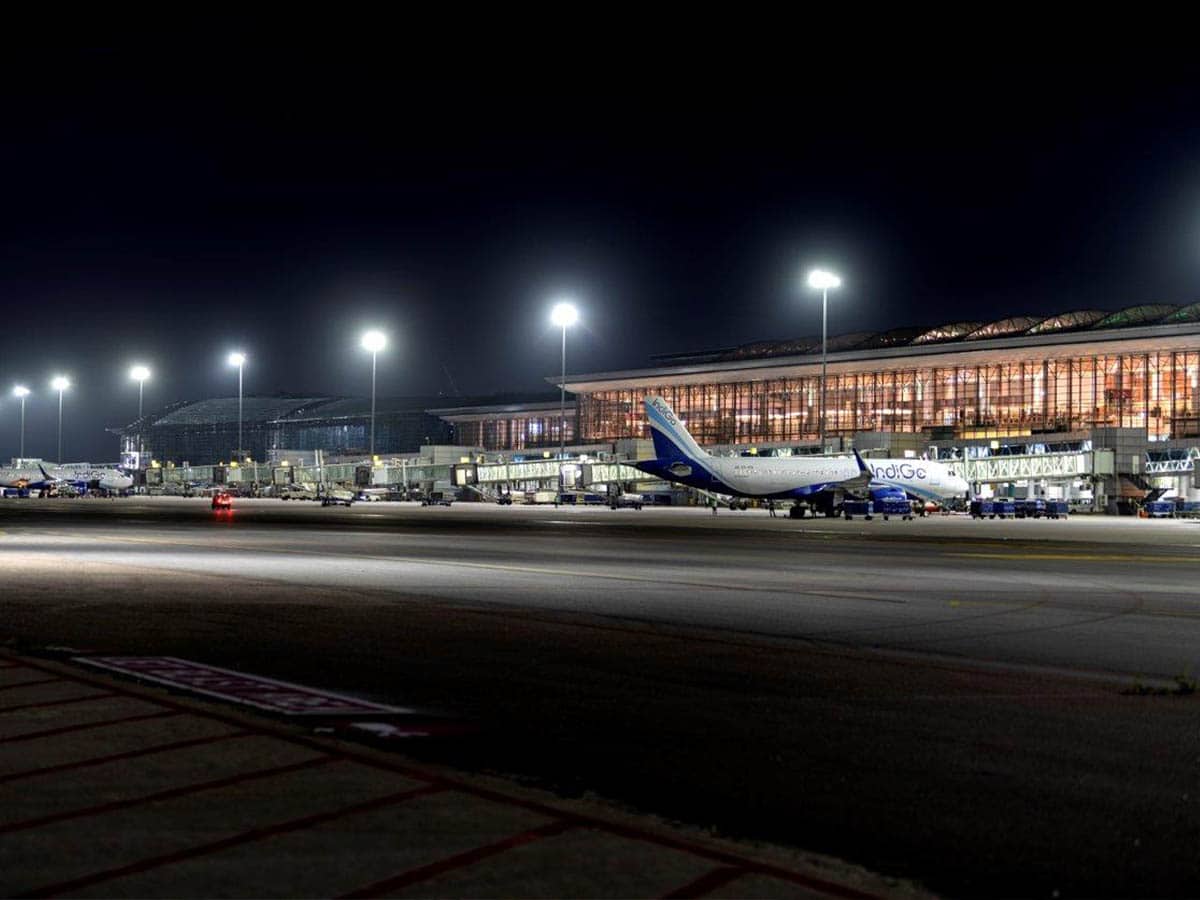
Hyderabad: Hyderabad International Airport is set to open first phase of its expanded terminal, which will include Ground Service Equipment (GSE) tunnel, the first of its kind at any airport in India
As part of the first phase of the expansion, the East Pier (straight) portion area will be inaugurated for the passengers soon. Spread across 15,742 square metres across three levels, the newly-expanded part of the terminal will be integrated with the present terminal, airport operator GMR Hyderabad International Airport Ltd (GHIAL) said on Tuesday.
The expanded airport will include the construction of additional built-up area that would be integrated with the existing Integrated Terminal Building (at concourse and piers) with additional infrastructure at airside and landside area.
The revamped integrated passenger terminal will increase the area to 379,370 square metres. It will have 149 check-in counters, 26 security screening machines with ATRS, 44 emigration counters, and 44 immigration counters.
To ensure safe operations and seamless baggage and passenger movement, a new tunnel has been built to minimise the time loss during the crisscross movement of Ground Service Equipment (GSE) vehicles and aircrafts.
The GSE tunnel connects the 42 remote aircraft stands (24 new + 18 existing) on the east side of the airport and the Head of Stand Road, also leading to remote gates area of the expanding passenger terminal
A first of its kind in the history of any airport in India, the GSE tunnel will minimise the time loss during the crisscross movement of airlines and ground support operations vehicles, equipment, passenger coaches required for turnaround of flights, resulting in the saving of fuel consumption for airlines, ground handlers, airline food caterers etc, thereby reducing the carbon footprint.
The annual savings of the carbon emission with this newly built GSE tunnel would be approximately 7,000 tonnes per annum.
The length of the tunnel is 264 metres and has 368 metres of approach ramps. It has a clear span of 10.6 metres, comprising of 8.0 m bidirectional carriage way with 1.3 m footpath on either side to enable pedestrian movement.
Inaugurated in 2008, the first of its kind airport under the Public-Private Partnership model in the country was designed for 12 million passengers per annum (MPPA)
As one of the fastest-growing airports in India, Hyderabad International Airport had been catering to 21 million passengers in financial year 2018-19. It had recorded robust growth in passenger traffic, with a 4 years CAGR of about 20 during FY’15-FY’19.
Over the years with the continued growth in passenger traffic, the International Interim Departure Terminal and Interim Domestic Arrival Terminal were commissioned to enhance passenger experience and drive operational efficiency.
The airport embarked on a major expansion to cater to the rising demand in passenger traffic and augment the passenger handling capacity beyond 34 million people.
The expanded domestic and international pier buildings will have more lounges, retail, and F&B outlets. With additional infrastructure added to the east and west pier buildings, there will be 44 contact gates, 28 remote departure gates and 9 remote arrival gates available for smooth operations
Four new Rapid Exit Taxiways (RETs) have been added to enhance runway capacity and improve operational efficiency. These RETs are designed to allow aircrafts to taxi off the runaway at relatively shorter distances and hence reduce runway occupancy time, thereby increasing runway capacity.
A new parallel taxiway has been built for effective operation during secondary runway utilisation.
To accelerate passenger boarding and disembarking from the aircraft, three aerobridges will be operational
For contactless and seamless travelling, 6 E-gates (2 for each boarding gate) will be operationalised, where the passengers can walk past for security checks and then board the flight in minimum time thereby reducing the waiting and boarding process
The east pier portion will have 6 domestic arrival bus gates. Ensuring convenience, comfort and safety to the passengers, it will have three Travellators (automated passenger walkways) in two levels. Passengers walking through the East pier can now avoid the long walks to board their flights.
To attend to the needs of women and children, 2 baby-care rooms and 2 family rooms with all the facilities one needs will be made accessible to women passengers.
